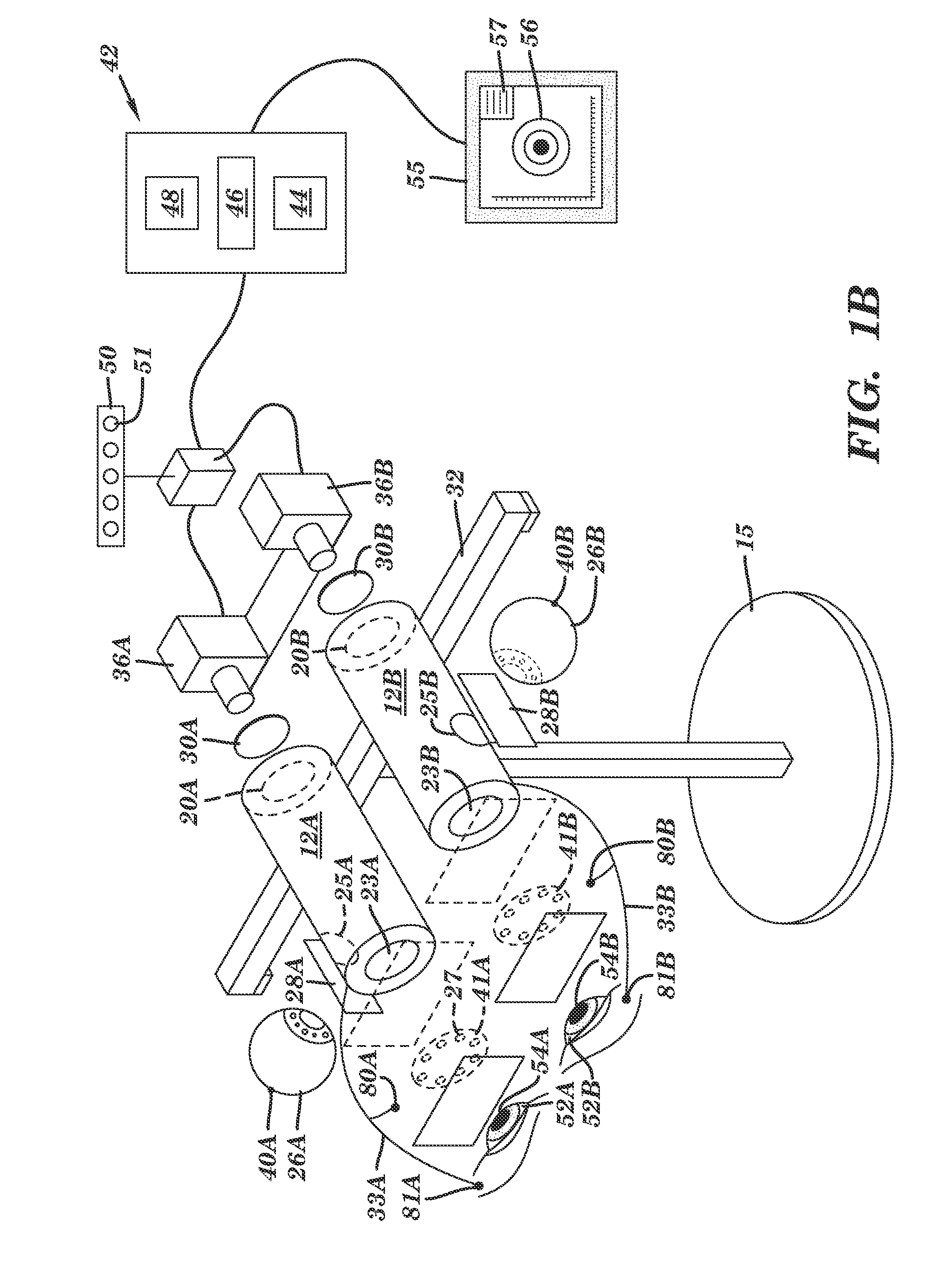Evaluating pupillary responses to light stimuli
a technology of pupillary responses and light stimuli, applied in the field of evaluating pupillary responses to light stimuli, can solve the problems of lack of specificity for any one ocular disorder whether of neurological or transmissive origin, and magnitude less than 0.3 log units
- Summary
- Abstract
- Description
- Claims
- Application Information
AI Technical Summary
Problems solved by technology
Method used
Image
Examples
Embodiment Construction
[0038]As stated above, the invention provides a solution for evaluating pupillary responses to light stimuli. The solution can include, for example, methods and / or systems that capture data about a patient's response to light stimuli. The solution can further include methods and / or systems that manipulate the captured data in order to evaluate the patient's response. In particular, a first eye is exposed to a series of flashes. Each flash can include substantially “white” light, or each flash can vary chromatically from the other flashes in the series. Pupillary reflexes for both eyes are measured during the exposures. The pupillary reflexes can be evaluated to determine if an ocular dysfunction is present. In one embodiment, both eyes are alternately exposed to the same series of flashes. Further, additional series of flashes that vary by location in the visual field and / or luminosity (i.e., brightness) can be incorporated and evaluated.
[0039]In an embodiment, the invention can tar...
PUM
 Login to View More
Login to View More Abstract
Description
Claims
Application Information
 Login to View More
Login to View More - R&D
- Intellectual Property
- Life Sciences
- Materials
- Tech Scout
- Unparalleled Data Quality
- Higher Quality Content
- 60% Fewer Hallucinations
Browse by: Latest US Patents, China's latest patents, Technical Efficacy Thesaurus, Application Domain, Technology Topic, Popular Technical Reports.
© 2025 PatSnap. All rights reserved.Legal|Privacy policy|Modern Slavery Act Transparency Statement|Sitemap|About US| Contact US: help@patsnap.com



